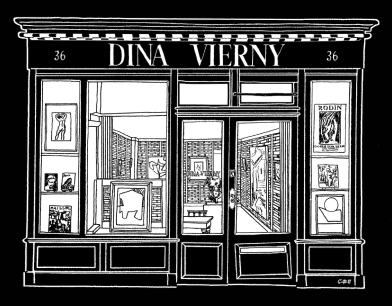All Exhibitions here
The Musée d'Orsay acquired at the beginning of this year a terracotta bust made by Aristide Maillol in 1904. The subject of this bust is Marthe Denis, wife of the artist Maurice Denis, and the acquisition was made directly from the couple’s descendants. Since last year, the work has been presented successively during the stages of the retrospective dedicated to Aristide Maillol at the Orsay Museum and the Kunsthaus in Zurich.July 11th 2023
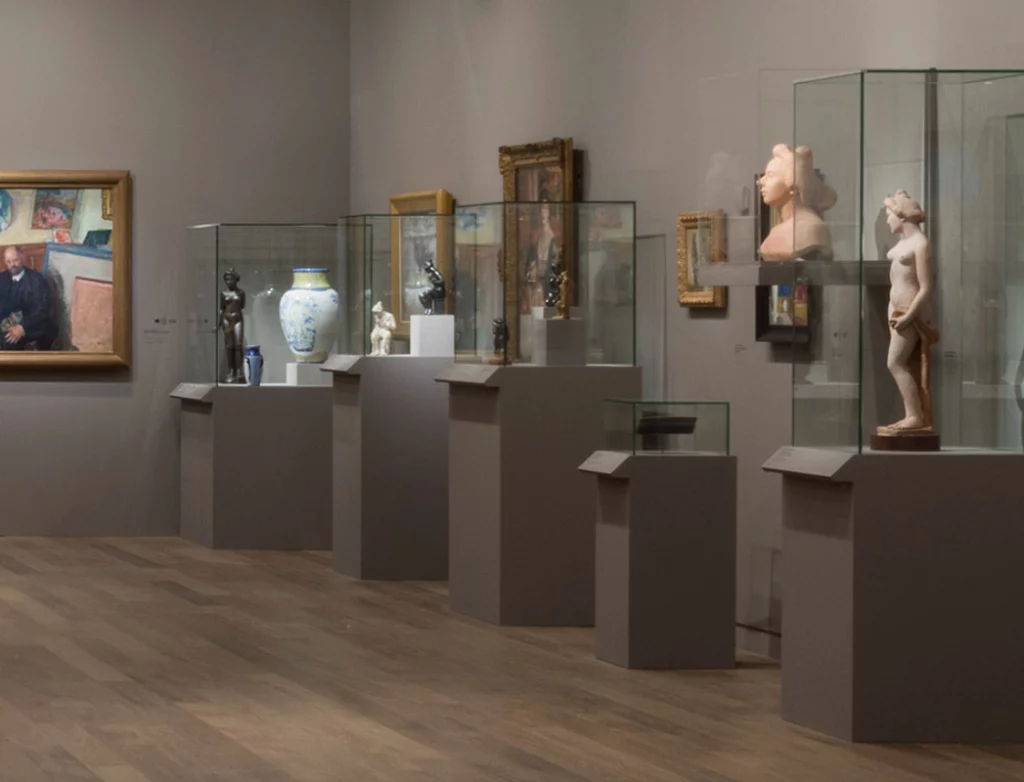 Exhibition view, the "Buste de Marthe Denis" at the Musée d’Orsay © Musée d'Orsay / Sophie Crépy
Exhibition view, the "Buste de Marthe Denis" at the Musée d’Orsay © Musée d'Orsay / Sophie Crépy The Musée d'Orsay acquired at the beginning of this year a terracotta bust made by Aristide Maillol in 1904. The subject of this bust is Marthe Denis, wife of the artist Maurice Denis, and the acquisition was made directly from the couple’s descendants. Since last year, the work has been presented successively during the stages of the retrospective dedicated to Aristide Maillol at the Orsay Museum and the Kunsthaus in Zurich.
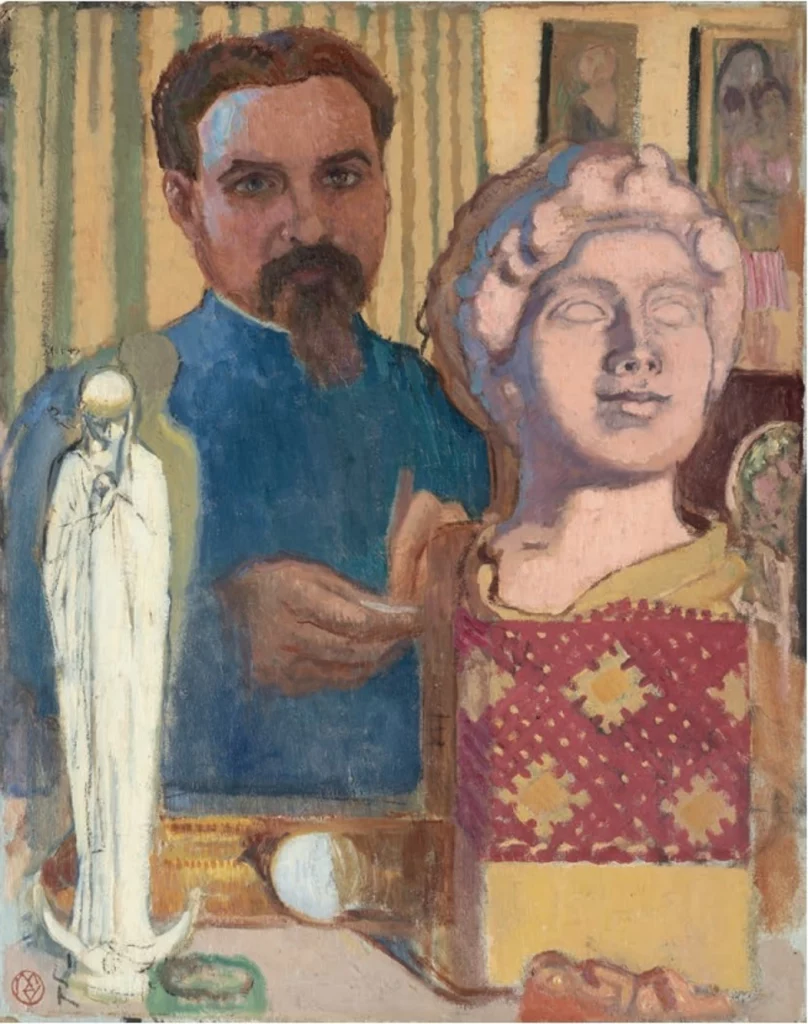

Maurice Denis, "Portrait de l’artiste au buste de Maillol", circa 1908, Oil on cardboard, 53 x 43 cm
Three different versions of busts representing Marthe Denis were made by Maillol between 1904 and 1907. This is the first of the three that served as a model for the following, and the one with the largest size. One of the three busts was also represented by Maurice Denis in his self-portrait made around 1908, testifying to the importance it has for him. Maillol made many busts during his career, especially women. The artist was particularly adept at capturing the shapes and expressions of models, with an emphasis on beauty and grace. He would also portray his artist friends such as Auguste Renoir in a bust.
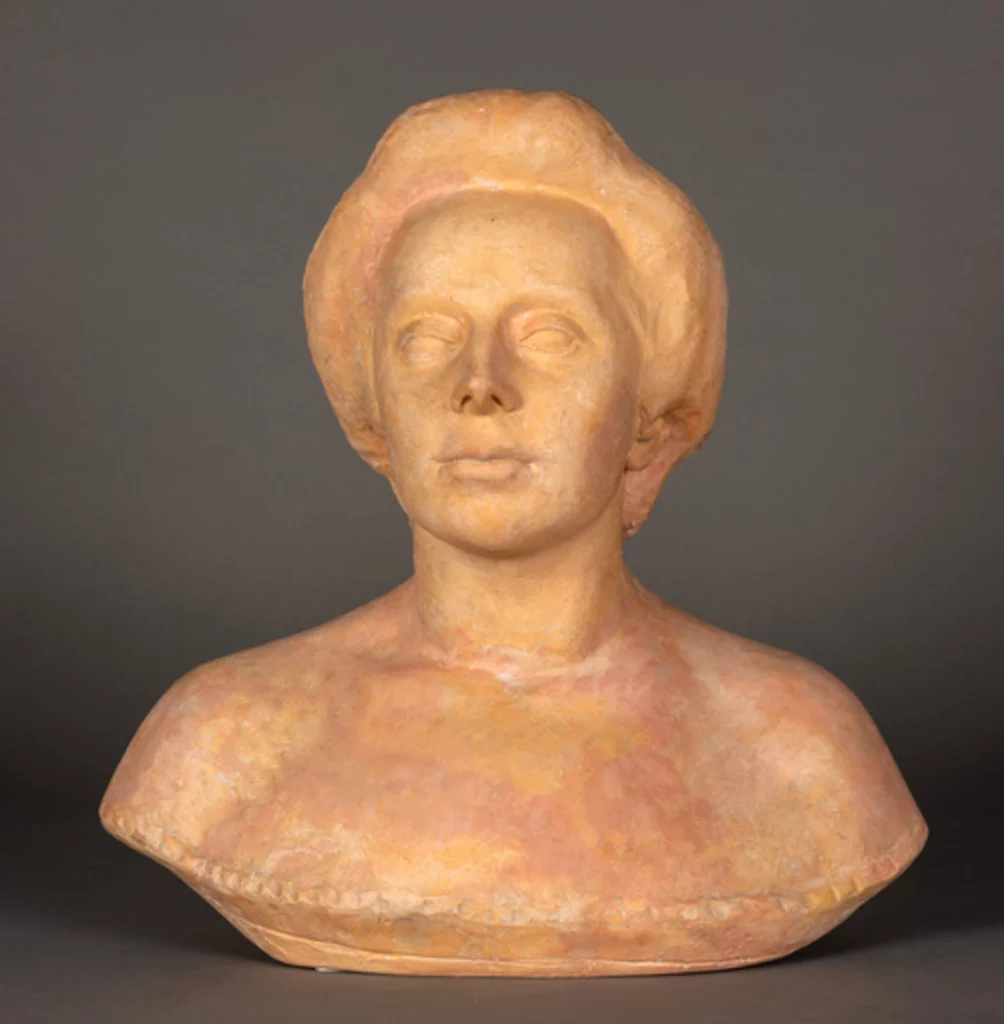
Aristide Maillol, "Buste de Marthe Denis", before 1907, Terracotta bust, 41,5 x 41 x 26,5 cm © Musée d’Orsay, dist. RMN-Grand Palais / Sophie Crépy
Maillol portrayed Marthe in a classicising attitude imbued with serenity, as if out of time and away from human concerns. Her facial features are largely synthesised, her skin smoothed and any blemishes erased, in keeping with the master's ideal. Maurice Denis wrote extensively about the work of his artist friend, as early as 1905, when Maillol's "Méditerranée" was exhibited at the Salon. This series of busts thus testifies to the bond that united the two artists members of the Nabis group, a relationship defined by Maillol as an "artistic brotherhood". He joined the group of artists after its genesis in the 1880s around Pierre Bonnard, Edouard Vuillard, Paul Sérusier, Paul-Elie Ranson and Maurice Denis. However, a very special symbiosis occurred between the two artists, both having the same vision of the representation of the female body: "No one composes a body of flesh, the symmetry of a torso, and all those sensual architectures where his imagination flourishes like Maillol did. No romanticism, no literature complicates the vision of these beautiful bodies, whose naïve sensuality, simplicity, unadorned nobility have the flavor of a fresh and very pure water: Fleshy and healthy muses that their nonchalant attitudes bring closer to Mother Earth” (Maurice Denis, “Maillol”, Le Figaro, 87th year, no. 365, 13 December 1941). The two artists also lived close to each other, Maurice Denis in Saint Germain en Laye and Maillol in Marly-le-roi, promoting mutual visits and artistic emulation.
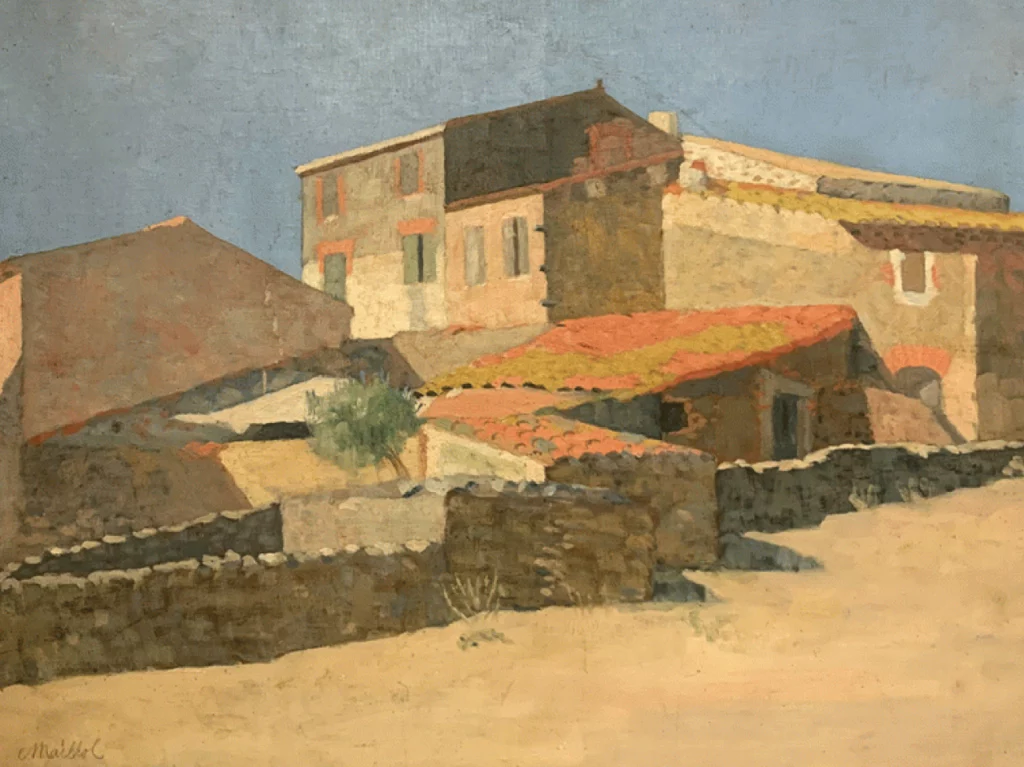
Aristide Maillol, "Vue de mas", undated, Oil on canvas, 46 x 55,5cm
The work of the Catalan master is regularly the subject of acquisitions by the French state. In February 2022, an oil on canvas entitled "Vue de mas" was bought at auction by the city of Perpignan for the Hyacinthe Rigaud Museum. The work was acquired for 35,000 euros and is now part of the permanent collections of the museum. Dina Vierny also participated in enriching the museum’s collection of works by Aristide Maillol with numerous donations. The first one she did, the "Étude pour la Montagne", took place in 1962 and was assigned to the Musée d'Orsay when it opened in 1986. During the inauguration of the museum, she sold the first state of the "Méditerranée" accompanied by several other sculptures of the master such as the "Torse de Femme" and the "Pomone drapée". She then renewed her donations in the 1990s, when she inaugurated at the same time her museum dedicated to housing the work of Maillol.
Three different versions of busts representing Marthe Denis were made by Maillol between 1904 and 1907. This is the first of the three that served as a model for the following, and the one with the largest size. One of the three busts was also represented by Maurice Denis in his self-portrait made around 1908, testifying to the importance it has for him. Maillol made many busts during his career, especially women. The artist was particularly adept at capturing the shapes and expressions of models, with an emphasis on beauty and grace. He would also portray his artist friends such as Auguste Renoir in a bust.
 Exhibition view, the "Buste de Marthe Denis" at the Musée d’Orsay © Musée d'Orsay / Sophie Crépy
Exhibition view, the "Buste de Marthe Denis" at the Musée d’Orsay © Musée d'Orsay / Sophie Crépy The Musée d'Orsay acquired at the beginning of this year a terracotta bust made by Aristide Maillol in 1904. The subject of this bust is Marthe Denis, wife of the artist Maurice Denis, and the acquisition was made directly from the couple’s descendants. Since last year, the work has been presented successively during the stages of the retrospective dedicated to Aristide Maillol at the Orsay Museum and the Kunsthaus in Zurich.
The Musée d'Orsay acquired at the beginning of this year a terracotta bust made by Aristide Maillol in 1904. The subject of this bust is Marthe Denis, wife of the artist Maurice Denis, and the acquisition was made directly from the couple’s descendants. Since last year, the work has been presented successively during the stages of the retrospective dedicated to Aristide Maillol at the Orsay Museum and the Kunsthaus in Zurich.
Three different versions of busts representing Marthe Denis were made by Maillol between 1904 and 1907. This is the first of the three that served as a model for the following, and the one with the largest size. One of the three busts was also represented by Maurice Denis in his self-portrait made around 1908, testifying to the importance it has for him. Maillol made many busts during his career, especially women. The artist was particularly adept at capturing the shapes and expressions of models, with an emphasis on beauty and grace. He would also portray his artist friends such as Auguste Renoir in a bust.

Aristide Maillol, "Buste de Marthe Denis", before 1907, Terracotta bust, 41,5 x 41 x 26,5 cm © Musée d’Orsay, dist. RMN-Grand Palais / Sophie Crépy
Maillol portrayed Marthe in a classicising attitude imbued with serenity, as if out of time and away from human concerns. Her facial features are largely synthesised, her skin smoothed and any blemishes erased, in keeping with the master's ideal. Maurice Denis wrote extensively about the work of his artist friend, as early as 1905, when Maillol's "Méditerranée" was exhibited at the Salon. This series of busts thus testifies to the bond that united the two artists members of the Nabis group, a relationship defined by Maillol as an "artistic brotherhood". He joined the group of artists after its genesis in the 1880s around Pierre Bonnard, Edouard Vuillard, Paul Sérusier, Paul-Elie Ranson and Maurice Denis. However, a very special symbiosis occurred between the two artists, both having the same vision of the representation of the female body: "No one composes a body of flesh, the symmetry of a torso, and all those sensual architectures where his imagination flourishes like Maillol did. No romanticism, no literature complicates the vision of these beautiful bodies, whose naïve sensuality, simplicity, unadorned nobility have the flavor of a fresh and very pure water: Fleshy and healthy muses that their nonchalant attitudes bring closer to Mother Earth” (Maurice Denis, “Maillol”, Le Figaro, 87th year, no. 365, 13 December 1941). The two artists also lived close to each other, Maurice Denis in Saint Germain en Laye and Maillol in Marly-le-roi, promoting mutual visits and artistic emulation.

Aristide Maillol, "Vue de mas", undated, Oil on canvas, 46 x 55,5cm
The work of the Catalan master is regularly the subject of acquisitions by the French state. In February 2022, an oil on canvas entitled "Vue de mas" was bought at auction by the city of Perpignan for the Hyacinthe Rigaud Museum. The work was acquired for 35,000 euros and is now part of the permanent collections of the museum. Dina Vierny also participated in enriching the museum’s collection of works by Aristide Maillol with numerous donations. The first one she did, the "Étude pour la Montagne", took place in 1962 and was assigned to the Musée d'Orsay when it opened in 1986. During the inauguration of the museum, she sold the first state of the "Méditerranée" accompanied by several other sculptures of the master such as the "Torse de Femme" and the "Pomone drapée". She then renewed her donations in the 1990s, when she inaugurated at the same time her museum dedicated to housing the work of Maillol.
